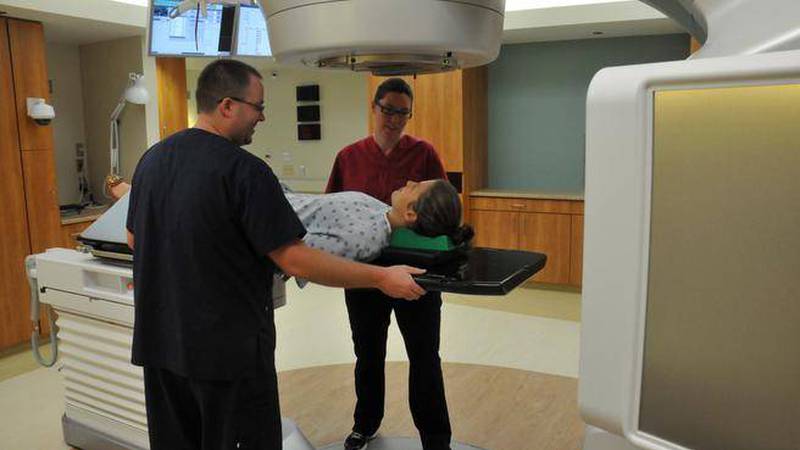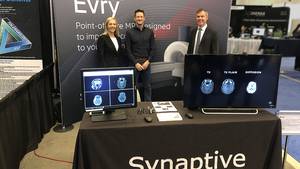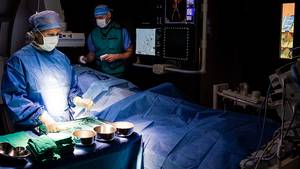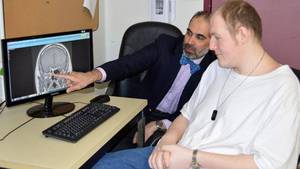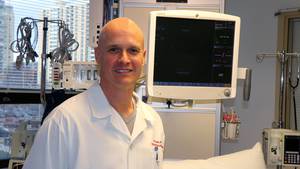At first impression, the linear accelerator at the QEII might seem like something from the set of a big budget sci-fi movie. The large white machine is crucial in cancer treatment technology used to project beams of radiation at tumours to destroy them without damaging the healthy tissue around it.
Dr. James Robar is chief of Medical Physics at Capital Health. He says that four of the province’s nine linear accelerators are slated for replacement by spring 2016; three of those units are coming to the QEII to replace aging equipment.
Through generous donors, the QEII Foundation has committed over $2.7-million for the new linear accelerators, bringing the Foundation’s investment to over $6.7-million for improvements to equipment and technology for cancer care at the QEII’s James and Edna Claydon Radiation Treatment Clinic.
Each year, over 2,000 Nova Scotians receive radiation treatment therapy. A patient usually receives several doses of radiation daily over a period of up to seven weeks. The radiation oncology team first carefully maps out the tumour and then creates an elaborate strategic plan that involves attacking it from a number of angles.
“The newer treatment units offer exquisite image guidance,” says Dr. Robar. This means that therapists can visualize the tumour as well as the surrounding healthy tissues prior to and during each treatment to make sure they deliver a dose as accurately as possible on the tumour itself, without harming the healthy tissue around it. It is even accurate on moving tissue, such as lungs.
“For curative treatment delivered by the new treatment units, we will be using a technique called Volumetric Modulated Arc Therapy (VMAT), which has the ability to sculpt the radiation beam to conform to the shape of a patient’s tumour. This allows delivery of an effective radiation dose to the tumour while minimizing dose to surrounding healthy tissues, even if the tumour has a complex shape.”
Because the new accelerators can treat a tumour with efficient arcs of radiation beams, the time that each patient spends on the treatment bed is reduced considerably.
“Compared to the previous approach that would offer close to the same treatment quality, a VMAT treatment is delivered in approximately three minutes compared to 10 to 15 minutes,” explains Dr. Robar. “This means more comfort for the patient, and that the full appointment, including careful setup by the radiation therapists, can be completed in approximately 15 minutes.”
An image guidance technology contained in the new units was actually designed in Halifax by researchers at the QEII and Dalhousie University.
“For over a decade our medical physicists have been collaborating with industrial partners to improve the precision of technology used to treat patients with radiation therapy and radiosurgery. The goal of this work is improved outcomes for our patients,” says Dr. Robar.
The four new treatment units will also come with versatile research modes, allowing medical physics faculty and graduate students to develop novel methods of treatment delivery and image guidance as part of their ongoing research.

